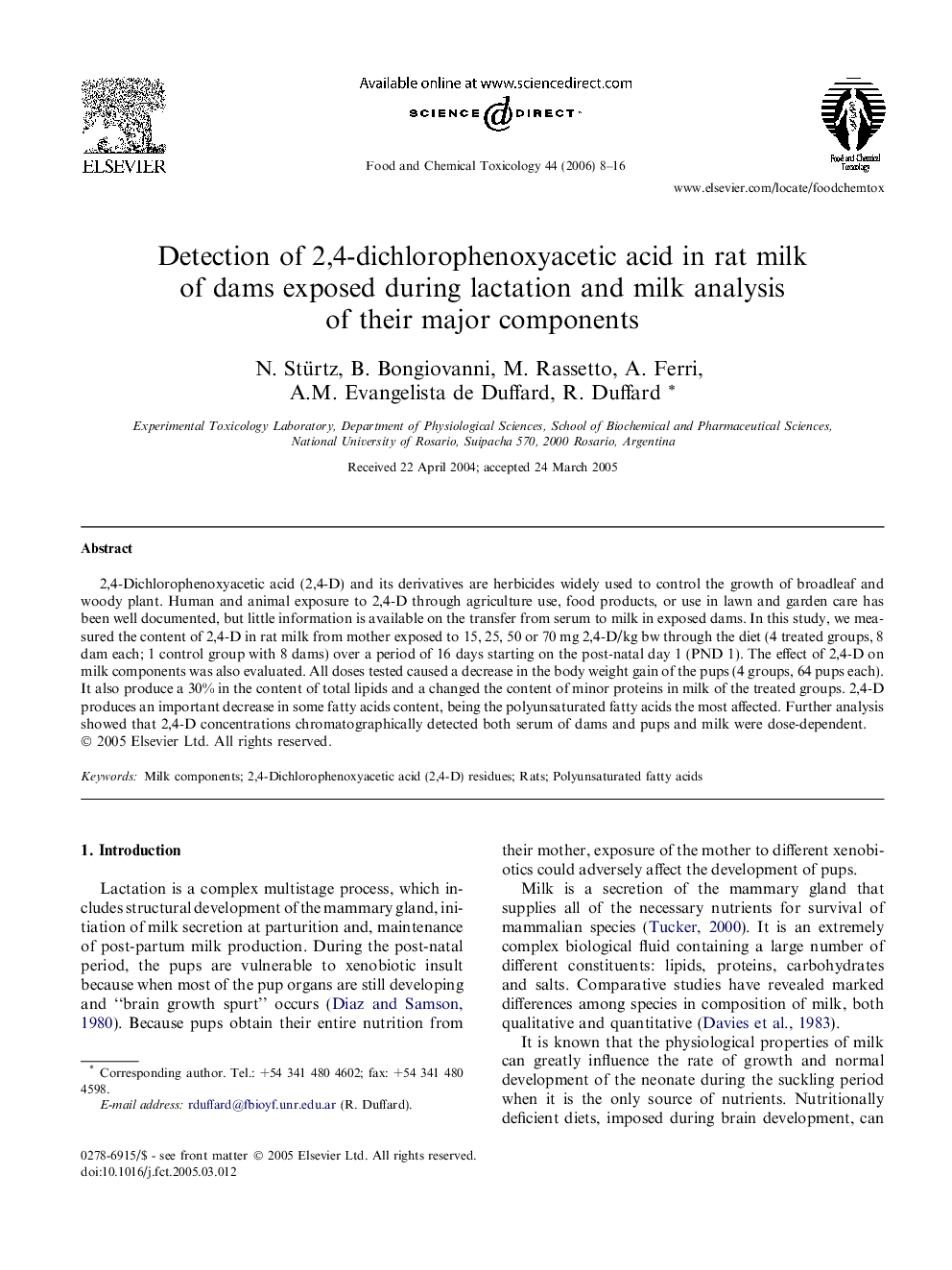| Article ID | Journal | Published Year | Pages | File Type |
|---|---|---|---|---|
| 2588231 | Food and Chemical Toxicology | 2006 | 9 Pages |
2,4-Dichlorophenoxyacetic acid (2,4-D) and its derivatives are herbicides widely used to control the growth of broadleaf and woody plant. Human and animal exposure to 2,4-D through agriculture use, food products, or use in lawn and garden care has been well documented, but little information is available on the transfer from serum to milk in exposed dams. In this study, we measured the content of 2,4-D in rat milk from mother exposed to 15, 25, 50 or 70 mg 2,4-D/kg bw through the diet (4 treated groups, 8 dam each; 1 control group with 8 dams) over a period of 16 days starting on the post-natal day 1 (PND 1). The effect of 2,4-D on milk components was also evaluated. All doses tested caused a decrease in the body weight gain of the pups (4 groups, 64 pups each). It also produce a 30% in the content of total lipids and a changed the content of minor proteins in milk of the treated groups. 2,4-D produces an important decrease in some fatty acids content, being the polyunsaturated fatty acids the most affected. Further analysis showed that 2,4-D concentrations chromatographically detected both serum of dams and pups and milk were dose-dependent.
